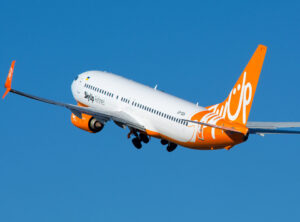
On Tuesday, in an extraordinary address to the nation, Serbian Prime Minister Milos Vucevic announced his decision to resign and called on everyone to calm down their passions and return to dialogue.
“Taking into account recent events, I have decided to resign. I have already informed President Aleksandar Vucic about this, and he agreed with my decision and took into account my arguments,” he said on the Serbian RTS TV and radio channel.
Vucevic attributed the decision to the student protests, which were joined by citizens. On Tuesday morning, a protest in Belgrade ended, during which students blocked one of the most important traffic intersections in the southern part of Belgrade for a day.
The reason for the protests was the tragic event in Novi Sad, where 15 people died in early November as a result of the collapse of a part of the roof at the railway station. This generated a stream of criticism against both the local authorities and the central government in Belgrade. They are not only related to the incident, but also to social issues – in particular, there were calls for a general strike and a blockade of government institutions.
The mayor of Novi Sad, Milan Djurić, will also resign, Vučević announced. He said that politicians must take responsibility and show that they are ready to calm the tension in society.
Amid the protests, Serbian President Vucic asked the opposition to demand a so-called consultative referendum to determine what support he has among citizens.

China increased its gold reserves by 44.17 tons in 2024 to a record 2279.57 tons, according to the China Gold Association (CGA). The PRC ranks sixth in the world in terms of reserves of this precious metal, Xinhua reports.
Gold consumption in the country last year decreased by 9.6% to 985.31 tons. Total gold production from domestic and imported raw materials increased by 2.85% to 534.106 tons.
In 2024, China’s largest companies mined 71.937 tons of gold at foreign mines, up 19.1% year-on-year.

In 2024, Ukrainian airline SkyUp Airlines increased passenger traffic by 61.6% compared to 2023, carrying 2.5 million passengers last year, its press service said on Monday.
The number of flights operated by SkyUp Airlines in 2024 also increased by 60.7% to 16,927. The number of routes increased from 664 in 2023 to 851 in 2024, the company said in a Facebook post.
It is noted that in 2024, SkyUp Airlines received a SAFA rating of 0.16, one of the best in European aviation. This rating is a safety indicator and is associated with the SAFA (Safety Assessment of Foreign Aircraft) program, which is conducted by the European Aviation Safety Agency (EASA) and national aviation authorities in Europe.
In addition, the airline has passed the IOSA (IATA Operational Safety Audit) audit, an international audit program developed by the International Air Transport Association (IATA) to assess the operational safety of airlines.
Among other things, it was noted that the air carrier has implemented AMOS (Aircraft Maintenance and Engineering Operating System), a leading integrated management system for aircraft maintenance and repair. With its help, the company was able to improve resource management and stability of operations. In the future, the company expects to reduce spare parts costs and minimize aircraft downtime.
Earlier it was reported that from April 2025, SkyUp Airlines will start operating regular flights from Chisinau (Moldova) to the most popular destinations in Ukraine: France, Portugal, Spain, Greece, and Cyprus.
In 2023, SkyUp increased passenger traffic by 24% to 1.546 million.

Sales of new passenger cars in Ukraine in 2024 are estimated at more than UAH 125 billion, up 18% year-on-year, according to Ukravtoprom’s telegram channel.
According to Ukravtoprom, the initial registrations of new passenger cars in Ukraine last year increased by 14% to 69.6 thousand units, and according to Auto-Consulting, their sales increased by 9.8% to 71.3 thousand units.
“Ukravtoprom informs that about half of the amount spent on the purchase of new cars was spent on five car brands, with the leader being Japanese Toyota – UAH 18.3 billion.
BMW came in second with UAH 16 billion, Mercedes-Benz took third place with UAH 9.7 billion, Volkswagen was fourth with UAH 9.2 billion, and Renault rounded out the top five with UAH 6.4 billion.
Audi, Skoda, Lexus, Land Rover, and Porsche are also among the top ten brands of new cars that Ukrainians have spared no expense.
As reported, according to Ukravtoprom, the top five registrations in quantitative terms were Toyota (10.73 thousand), Renault (7.27 thousand), Skoda (5.03 thousand), Volkswagen (4.9 thousand), and BMW (4.83 thousand). At the same time, Mercedes-Benz did not make it into the top ten, and in December 2024 it ranked 12th in terms of the number of cars sold.

In 2024, Zaporizhstal Iron and Steel Works of Zaporizhzhia launched the production of six new types of sheet and coil products, which are in demand in the construction industry, railcar building, and hardware segment.
According to the company’s press release on Monday, over the past year, about 14 thousand tons of new products were shipped to consumers from Bulgaria, Poland, Slovakia and the domestic market.
“Ukrainian steelmakers are working despite the following: lack of workers; energy supply constraints; underutilization of production capacities; and the logistics crisis. In these realities, we are not just producing steel products – we are competing and fighting for customers, and in response to customer requests, we are developing new product mixes. In 2024, Zaporizhstal shipped 14 thousand tons of new product mixes to its customers. And the work on replenishing the product portfolio continues: we are currently working on the development of three more new types of products,” said Taras Shevchenko, Acting CEO of the steel plant.
At the same time, the press release clarified that in 2024, Zaporizhstal will launch four products in the cold-rolled segment. In particular, the S250GD coil, which is used for further galvanizing and other coatings, and then for the manufacture of lightweight steel thin-walled structures.
The press release also specified that in 2024, Zaporizhstal will launch four products in the cold-rolled segment. In particular, the S250GD coil, which is used for further galvanizing and other coatings, and then for the manufacture of lightweight steel thin-walled structures. The new products also include S215G rolled steel, which is used to manufacture open and welded metal profiles, sheets and other building structures.
Zaporizhstal’s metallurgists have also mastered the technology for producing DC01 coils with a thickness of 2.5 mm and cold-rolled plates with a thickness of 2.1-2.5 mm. These types of rolled products are used in conditions where the precision of product geometry and ease of forming with a sufficient level of mechanical strength are important.
In addition, in 2024, Zaporizhstal started production of two types of hot-rolled steel. These are coils and sheets of S355JR/S355J2 grades with a thickness of 2.75-2.79 mm, which are used in the production of electric-welded pipes and profiles, and a sheet with a size of 5.0×1500×6000 mm made of 09G2/09G2S steel for the manufacture of railway structural elements.
In total, in 2024, Metinvest Group’s Ukrainian steelmaking enterprises mastered the production of 20 new types of steel products in response to market demand.
“Zaporizhstal is one of the largest industrial enterprises in Ukraine, whose products are in great demand among consumers both in the domestic market and in many countries around the world.
“Zaporizhstal is in the process of being integrated into Metinvest Group.

On 13 February, the largest conference for Ukrainian entrepreneurs on entering foreign markets, finding partners, step-by-step strategies and tactical solutions – Mind Export Summit 2025 – will take place in Kiyv for two days.
Top 5 reasons why you should visit MES-2025:

All these (and other) questions will be answered, as the topics of the Mind Export Summit 2025 panel discussions are as follows:
Among the speakers:
Visitors will also be able to learn about the cases of Ukrainian companies already operating in foreign markets and even try their products at the Exporters’ Fair, which will be part of the Summit. Among the companies: vegan products Wanted Vegan, furniture company Tivoli, law firm Mitra, crispy cheese balls snEco, and signature herbal teas Zhygun Herbs.
Those who are already determined to conquer foreign markets will have the opportunity to take part in the Business Simulation ‘Entering Export Markets’ on the second day of the Summit, where participants will simulate the process of expanding abroad and work out possible problems.
To get tickets, please follow the link https://exportsummit.mind.ua/
Come, it will be useful!
Open4business is a media partner